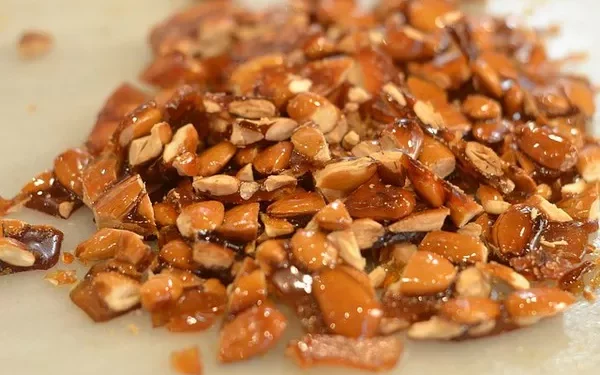When managing diabetes, diet plays a crucial role in maintaining blood sugar levels and overall health. Among the various dietary options, nuts, particularly walnuts, have gained significant attention for their potential benefits in diabetic diets. This article will delve into the nutritional profile of walnuts, explore their impact on blood sugar control, and discuss how they can be incorporated into a diabetes-friendly diet.
Nutritional Composition of Walnuts
Walnuts are a rich source of essential nutrients, making them a valuable addition to any diet, particularly for individuals managing diabetes. A 1-ounce (about 28 grams) serving of walnuts provides:
- Calories: 185
- Protein: 4.3 grams
- Fat: 18.5 grams
- Saturated Fat: 1.7 grams
- Polyunsaturated Fat: 13.4 grams
- Monounsaturated Fat: 2.5 grams
- Carbohydrates: 3.9 grams
- Dietary Fiber: 1.9 grams
- Sugars: 0.7 grams
Vitamins and Minerals:
- Vitamin E
- Vitamin B6
- Folate
- Magnesium
- Phosphorus
- Copper
- Manganese
Walnuts are also an excellent source of alpha-linolenic acid (ALA), a type of omega-3 fatty acid, which has been linked to numerous health benefits, including anti-inflammatory properties and cardiovascular protection.
Walnuts and Blood Sugar Control
Low Glycemic Index and Carbohydrate Content
One of the primary concerns for individuals with diabetes is the impact of food on blood glucose levels. The glycemic index (GI) is a measure of how quickly a food raises blood sugar levels after consumption. Foods with a low GI are preferable for diabetics as they cause a slower and more gradual rise in blood glucose.
Walnuts have a low carbohydrate content, with a minimal amount of sugars, and they do not cause significant spikes in blood sugar. The combination of healthy fats, protein, and fiber in walnuts helps slow the absorption of glucose into the bloodstream, contributing to better glycemic control.
Insulin Sensitivity and Resistance
Research has suggested that walnuts may play a role in improving insulin sensitivity, which is crucial for individuals with type 2 diabetes. Insulin sensitivity refers to how effectively the body’s cells respond to insulin, allowing glucose to be taken up from the blood. Improved insulin sensitivity can lead to better blood sugar control and reduced risk of complications associated with diabetes.
A study published in Diabetes Care found that consuming walnuts was associated with improved insulin sensitivity in adults with type 2 diabetes. The study indicated that the healthy fats and bioactive compounds in walnuts might enhance insulin function, thereby aiding in the management of blood glucose levels.
Cardiovascular Benefits of Walnuts for Diabetics
Heart Health and Omega-3 Fatty Acids
Cardiovascular disease is a common complication associated with diabetes. Managing heart health is therefore a critical aspect of diabetes care. Walnuts are rich in ALA, a plant-based omega-3 fatty acid that has been shown to reduce inflammation and lower the risk of heart disease.
Regular consumption of walnuts has been linked to improved lipid profiles, including reductions in total cholesterol, LDL (low-density lipoprotein) cholesterol, and triglycerides. These effects contribute to a lower risk of atherosclerosis and other cardiovascular conditions, making walnuts a heart-healthy choice for diabetics.
Antioxidant Properties
Walnuts contain a variety of antioxidants, including vitamin E and polyphenolic compounds, which protect cells from oxidative stress. Oxidative stress is a process that occurs when there is an imbalance between free radicals and antioxidants in the body, leading to cell damage. This process is particularly harmful to individuals with diabetes, as it can exacerbate complications such as cardiovascular disease and neuropathy.
By incorporating walnuts into a diabetic diet, individuals can benefit from the antioxidant properties that help reduce oxidative damage and support overall health.
Weight Management and Satiety
Caloric Density and Portion Control
While walnuts are nutrient-dense, they are also calorie-dense, which means they should be consumed in moderation, especially for individuals who are managing their weight. However, the healthy fats, protein, and fiber in walnuts can promote satiety, helping individuals feel fuller for longer and reducing the likelihood of overeating.
For diabetics, maintaining a healthy weight is crucial for blood sugar control and reducing the risk of complications. Including a moderate amount of walnuts in the diet can aid in weight management by curbing hunger and supporting metabolic health.
Impact on Metabolic Syndrome
Metabolic syndrome is a cluster of conditions, including increased blood pressure, high blood sugar, excess body fat around the waist, and abnormal cholesterol levels, that occur together and increase the risk of heart disease, stroke, and type 2 diabetes. Research has shown that walnuts may have a positive impact on metabolic syndrome by improving cholesterol levels, reducing inflammation, and supporting healthy blood sugar levels.
A study published in the Journal of the American Heart Association found that a diet including walnuts led to significant improvements in metabolic syndrome components, particularly in reducing waist circumference and improving lipid profiles. These findings suggest that walnuts can be an effective part of a dietary strategy to manage or prevent metabolic syndrome in diabetics.
Practical Tips for Incorporating Walnuts into a Diabetic Diet
Portion Size and Frequency
As with any food, moderation is key when incorporating walnuts into a diabetic diet. A standard serving size is about 1 ounce, which is roughly 14 halves of walnut. Consuming this amount several times a week can provide the nutritional benefits without contributing to excessive calorie intake.
Incorporating Walnuts into Meals
Breakfast: Add chopped walnuts to oatmeal or yogurt for a nutritious and filling start to the day. The combination of fiber, protein, and healthy fats will help stabilize blood sugar levels throughout the morning.
Salads: Sprinkle walnuts over salads for added crunch and a boost of healthy fats. Pairing walnuts with leafy greens and a source of lean protein can make for a balanced and satisfying meal.
Snacks: Walnuts can be enjoyed as a snack on their own or combined with other nuts and seeds. For a sweet treat, try a small handful of walnuts with a few pieces of dark chocolate, which is also rich in antioxidants.
Baking: Use ground walnuts in baking recipes as a substitute for flour or as a topping for muffins and bread. This can add texture and flavor while enhancing the nutritional profile of your baked goods.
Smoothies: Blend walnuts into smoothies for a creamy texture and an extra dose of healthy fats. Walnuts pair well with fruits like bananas, berries, and apples.
Considerations for Allergies and Intolerances
While walnuts are generally safe for most people, they are a common allergen. Individuals with nut allergies should avoid walnuts and seek alternative sources of healthy fats and protein. Additionally, some people may experience digestive discomfort when consuming nuts, so it’s important to listen to your body and adjust your intake accordingly.
See also: Is a Diabetic Diet Heart Healthy?
Conclusion: Walnuts as a Beneficial Food for Diabetics
In conclusion, walnuts are a nutritious and diabetes-friendly food that can offer numerous health benefits, particularly for blood sugar control and cardiovascular health. Their low glycemic index, rich nutrient profile, and ability to improve insulin sensitivity make them an excellent addition to a diabetic diet. However, as with all foods, portion control is essential to prevent excessive calorie intake.
By incorporating walnuts into your meals in moderation, you can enjoy their health benefits while supporting your diabetes management goals. As always, it is important to consult with a healthcare provider or registered dietitian before making significant changes to your diet, especially if you have diabetes or other underlying health conditions.
Related topics:


























